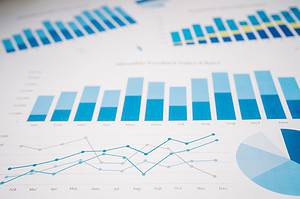isixsigma.com

Understanding Rejectable Quality Level: Key Concepts and Applications
Published:When it comes to sampling plans, there are some terms that are absolutely crucial to be aware of. These are Acceptable Quality Level (AQL), Indifference Quality Level (IQL), and Rejectable Quality Level (RQL).
Read more »
What Is Lean Manufacturing?: Delivering Quality to Your Customers
Published:Lean management – often called “Lean Management,” “The Toyota Way” or simply “Lean” – is a systematic method for waste minimization and process improvement in any type of service or manufacturing
Read more »
I-MR Chart: Understanding Your Process Stability
Published:The Individuals-Moving Range (I-MR) Chart is one of the most widely-used control charts in statistics and the standard for most situations where data was collected in individual data points. It allows such a process to be assessed for stability both in terms of central tendency as well as variation.
Read more »
NORMSINV: Use Microsoft Excel for Your Analysis
Published:NORMSINV is an Excel function that provides the INVERSE of the cumulative standard normal distribution. Let’s learn how it works.
Read more »
SCOT Analysis: Gain Insights for Your Organization
Published:You need to know more about how to know more about your company. Good analytical practices shape your strategic thinking, which determines your entire future.
Read more »
Warning Limits: Catch Outliers in Your Production
Published:Lean business operations don’t happen without defining expectations, collecting data and monitoring results. Statistical limits serve your streamlining goals through efficiency quality control and loss prevention.
Read more »
Root Cause and Failure Analysis (RCFA): How to Fix Production Issues
Published:In a fiercely competitive market reacting swiftly to product or process failures, determining the true root cause and implementing change limits financial and reputational damage. Utilising root cause and failure analysis methodology is your gold standard for robustly preventing future failures.
Read more »
Exploring the Null Hypothesis: Definition and Purpose
Published:The null hypothesis, written as Ho is a subset of the larger topic of Hypothesis Testing. The null hypothesis is a statement about a specific condition of your data and allows you to draw important conclusions about that data.
Read more »
Understand the Difference Between Verification and Validation
Updated:Many people use the terms verification and validation interchangeably without realizing the difference between the two. Not understanding that difference can lead to many models that do not truly represent a real-world process and lead to errors in forecasting or predicting the outcomes. In this article, we will explore the meaning, importance, differences, and basic […]
Read more »
Platykurtic Distribution: Working Beyond Normality
Published:Not all your data will have a normal distribution. Sometimes, the curve is taller or shorter than a theoretical normal distribution. Does that mean you have a problem? We can answer that question by learning a little bit more about kurtosis and the platykurtic distribution.
Read more »
Identifying and Managing Special Cause Variations: Dealing with the Unexpected
Published:When it comes to variance, there are two main types to consider. These are common cause and special cause. Common cause variations usually do not pose much of a problem. Special case variations are another story.
Read more »
Confidence Bands: An Essential Tool for Statistical Analysis
Published:The concept of a confidence band is usually associated with regression analysis. We will also explain why a confidence band is not the same as a confidence interval.
Read more »
Using Voice of the Process to Identify Critical Processes for Improvement
Published:Are you hearing voices? If it’s in a business context, then there is nothing to worry about — and it might even be a good thing. Let’s listen in to the voice of the process and hear what it has to say.
Read more »
How Kaizen Events Drive Continuous Improvement
Published:With your business, sometimes a need arises to address an issue swiftly and with all hands on deck. A Kaizen Event is meant for these kinds of times.
Read more »
Engineering Change Request (ECR): Preparing for Change
Updated:While you hope everything goes smoothly and as planned, sometimes you have to make a change in your existing product or product design. The engineering change request is the form you use to initiate the changes.
Read more »
Design Risk Assessment: Minimize Problems Before They Begin
Published:Design risk assessment is a risk assessment framework that identifies, analyzes, and documents risks during a design project. When performing a design risk assessment, the team will assess all risks associated with the project including the design process.
Read more »
Multiple Regression Allowed this Company to Save Money by Reducing Employee Turnover
Published:Background Company X (fictional name) is a multi-billion-dollar retail giant, known for offering an expansive range of Do It Yourself (DIY) goods and services. With hundreds of retail outlets scattered across the country, the company’s retail division was the backbone of its operations, responsible for generating a significant portion of its revenue. However, in recent […]
Read more »
The Difference Between Correction and Corrective Action in Business Problem-Solving
Published:Problems are going to arise in business, but the companies that succeed in the long term are those that find the true causes of those problems and find ways to keep them from happening again. When an issue occurs, the inclination is to stop it quickly. While this is fine, it is important […]
Read more »
Mastering the T-Statistic: Tips and Tricks
Published:You may think turnaround time has decreased from your baseline as a result of a process improvement. But has it really? The t statistic is one way to find the answer to that question.
Read more »
PDSA vs. PDCA: What’s the Difference?
Published:What is PDSA? PDSA stands for Plan, Do, Study, and Act. It is a method that is used to test a change that is being implemented or has been implemented. Working through these four steps guides thinking into breaking down a task into sections and then evaluating the result, making improvements, and then […]
Read more »
The Role of Multi-Generational Product Planning in Business Growth
Updated:“So much to do, and so little time to do it” might be a good way to describe multi-generational product planning, or MGPP. Sometimes it makes sense to stage your improvements over a longer period of time.
Read more »
Natural Tolerances: Expecting the Drift
Updated:The economical method of setting the control limits of a process to a specific level is known as natural tolerance. Natural tolerances work well for typical desired levels of control and are useful for reviewing the practicality of the specification limits.
Read more »
Clean Point: Getting Your Production Back on Track
Published:In manufacturing, production may have to halt due to an issue somewhere in the process. Once the issue is addressed, it is important to know just where the clean point is.
Read more »
AI-Powered Tools That Are Transforming Business Operations
Published:What AI-powered tools are transforming the way businesses work? The cork is out of the bottle, so to speak, and AI has arrived in a big way. That said, you might be left in the lurch when it comes to integrating artificial intelligence in your workplace. You don’t have to worry, though, we’re […]
Read more »
Z Bench: See How Far Your Data Is Straying
Published:Z bench is not where Zorro rested after saving another town. There are a number of Six Sigma terms associated with the letter Z, such as Z score, Z bench long term, Z bench short term, and Z shift. Let’s explore the A to Zs about Z.
Read more »
What are Replicates? A Complete Guide
Published:When doing Design of Experiments (DOE), replicates become an important consideration for improving the accuracy of your experiment. Let’s learn a little more about replicates. In Design of Experiments (DOE), a replicate is a single repetition or run of an experiment, with all conditions and factors kept constant except for the treatment being […]
Read more »
Run Charts: A Simple and Powerful Tool for Process Improvement
Published:The run chart is a powerful, simple, and easy-to-use process improvement tool. Often, the run chart is shortchanged as the statistical tests that can be used with run charts are overlooked. This article takes the reader through the benefits of a run chart as well as how to correctly create and analyze one. […]
Read more »
Breakthrough Improvement: Going Beyond Incremental Changes
Published:How much improvement do you expect from your projects? Is 5% ok? How about 15%? Breakthrough improvement will be 70% or more. Let’s see how breakthrough improvement works.
Read more »
The Rise of Data-Driven Decision-Making: Why It’s Crucial for Success
Published:What is data-driven decision-making? Chances are you’re used to seeing data-driven being bandied about, considering this you’re on our site. However, that isn’t the full approach we’re discussing today. Six Sigma is a methodology driven by data, but it isn’t the whole picture for this new set of tools coming about in the […]
Read more »
The 7 Principles of Quality Management
Published:In today’s fast-paced, customer-driven environment, businesses must continually strive to enhance quality while reducing inefficiencies. Quality management is not merely about ensuring product reliability but involves a holistic approach to improve all aspects of an organization. To help organizations manage quality effectively, the International Organization for Standardization (ISO) outlines seven key principles of […]
Read more »
Y = f(x) Roadmap: Telling the DMAIC Story Using Xs and Ys
Published:With its DMAIC (Define, Measure, Analyze, Improve, Control) roadmap, the Six Sigma methodology provides a structured and systematic approach to solving business and process problems. The related toolkit is a selection of proven tools and methods that– correctly applied – help to determine, analyze, and improve a problem. All is well and good, however, […]
Read more »
Exploring Process Capability Analysis: A Versatile Tool for Quality Assessment
Published:As the name implies, capability analysis is an analysis of the ability of your process to meet your customer’s expectations and requirements. There are a number of calculated metrics which can be used to help you do your capability analysis.
Read more »
Kappa: Reliable Measurements for Attributes in Data
Published:Kappa is the common measurement for judging how your measurement system works for attribute data. It is also described as the primary output from an Attribute Agreement Analysis.
Read more »
Defect Prevention: Reducing Costs and Enhancing Quality
Published:“Prevention is better than cure” applies to defects in the software development life cycle as well as illnesses in medical science. Defects, as defined by software developers, are variances from a desired attribute. These attributes include complete and correct requirements and specifications as drawn from the desires of potential customers. Thus, defects cause […]
Read more »
Goodman-Kruskal Gamma: A Powerful Tool for Research and Analysis
Published:Correlation allows you to determine whether sets of data have some sort of relationship. Goodman-Kruskal Gamma looks at pairs of data and determines a correlation. Let’s see how.
Read more »
Are You Ready? How to Conduct a Maturity Assessment
Published:When an organization begins a Lean Six Sigma deployment, what is the first step that the leadership team should take? Should they start executing Kaizen events to demonstrate the impact of quick process improvement? Or should they kick off with Six Sigma projects, using the DMAIC or DFSS roadmap, with a deep dive […]
Read more »
Random Variation: Understanding the Noise
Published:Is random variation a good thing or a bad thing? Should I worry about the statistical implications or the practical ones? Let’s find out.
Read more »
Six Sigma DMAIC Roadmap: Get Your Processes Under Control
Published:The Six Sigma DMAIC (Define, Measure, Analyze, Improve, Control) methodology can be thought of as a roadmap for problem-solving and product/process improvement. Most companies begin implementing Six Sigma using the DMAIC methodology and later add the DFSS (Design for Six Sigma, also known as DMADV or IDDOV) methodologies when the organizational culture and […]
Read more »
Little’s Law: A Powerful Metric for Process Analysis
Published:Your customers want to know when they can expect completion of their orders. Little’s Law, or Process Lead Time (PLT), is a simple way to calculate how long an order will take to complete.
Read more »
Visual Management Boards: Seeing Progress and Success
Published:Visual Management Boards played a critical role in enabling this company to link and visually display critical metrics, KPIs, and actions simply and consistently. So, what are Visual Management Boards? Today, we’re exploring how these visualization tools can let your company reach new heights. While the company is fictional, the results speak for […]
Read more »
PDCA vs. DMAIC: What’s the Difference?
Published:What are the differences between PDCA and DMAIC? There is no shortage of jargon and acronyms to keep track of within the Six Sigma methodology. However, the two methods we’re looking at today blur the lines substantially. So, let’s jump in and see exactly how these approaches differentiate themselves. What is PDCA? Plan […]
Read more »
The Role of Lower Control Limit in Process Stability and Improvement
Published:Process stability is a critical need before trying to improve that process, and control charts are used to assess it. The lower control limit is one of the three fundamental lines on a control chart for identifying a lack of stability.
Read more »
Defining Stakeholder Roles and Responsibilities in Process Improvement
Published:The ability of a process improvement initiative to invoke sustainable change within an organization depends on the support of stakeholders who will execute the proposed changes.
Read more »
Subject Matter Experts: Key Players in Process Improvement and Business Success
Published:So, you’ve decided to tackle a key process improvement project. You have your problem statement and scope set up, and now you need to determine who will be assigned to the core project team. Who needs to be on the team to maximize your probability of success? There’s a term for those individuals: […]
Read more »
A Guide to Process Cycle Efficiency: Optimizing Your Process
Updated:Have you ever heard your customer ask, “Why does my job take 10 days when there is only 5 days of actual work?” It may be because the Process Cycle Efficiency (PCE) is low, and there is a lot of waste in the process. PCE will help define how much that waste is.
Read more »
Most Practical DOE Explained: Tips and Tricks to Design Your Experiments
Published:For purposes of learning, using, or teaching a design of experiments (DOE), one can argue that an eight-run array is the most practical and universally applicable array that can be chosen. There are several forms of and names given to the various types of these eight-run arrays (e.g., 2^3 Full Factorial, Taguchi L8, […]
Read more »
Enhancing Employee Performance with Standard Work: The Road to Success
Published:Learn the benefits of standard work, including how it is used to reduce variability within processes, assists faster training timeframes, and provides a starting point for process improvement projects.
Read more »
Heijunka: The Art of Leveling Production
Published:Heijunka (pronounced hi-JUNE-kuh) is a Japanese word that means “leveling.” When implemented correctly, heijunka elegantly – and without haste – helps organizations meet demand while reducing while reducing waste in production and interpersonal processes. According to many Lean experts, heijunka is better achieved as a later-stage implementation in a Lean organization, long after value […]
Read more »
Quality Metrics in Focus: Analyzing Defects Per Unit
Updated:Learn how defects per unit is used to understand the quality levels regarding defects, how DPU compares to other yield metrics, and the benefits of regularly measuring the metric.
Read more »
Understanding the Basics of ANOVA and Dunnett’s 1-way ANOVA
Updated:When testing whether the means of more than 2 groups are statistically different, you could use a one-way ANOVA. But if you have multiple treatment groups, you can use Dunnett’s one-way ANOVA. ANOVA stands for Analysis of Variance. It is a statistical method used to compare the means of two or more groups of data. […]
Read more »